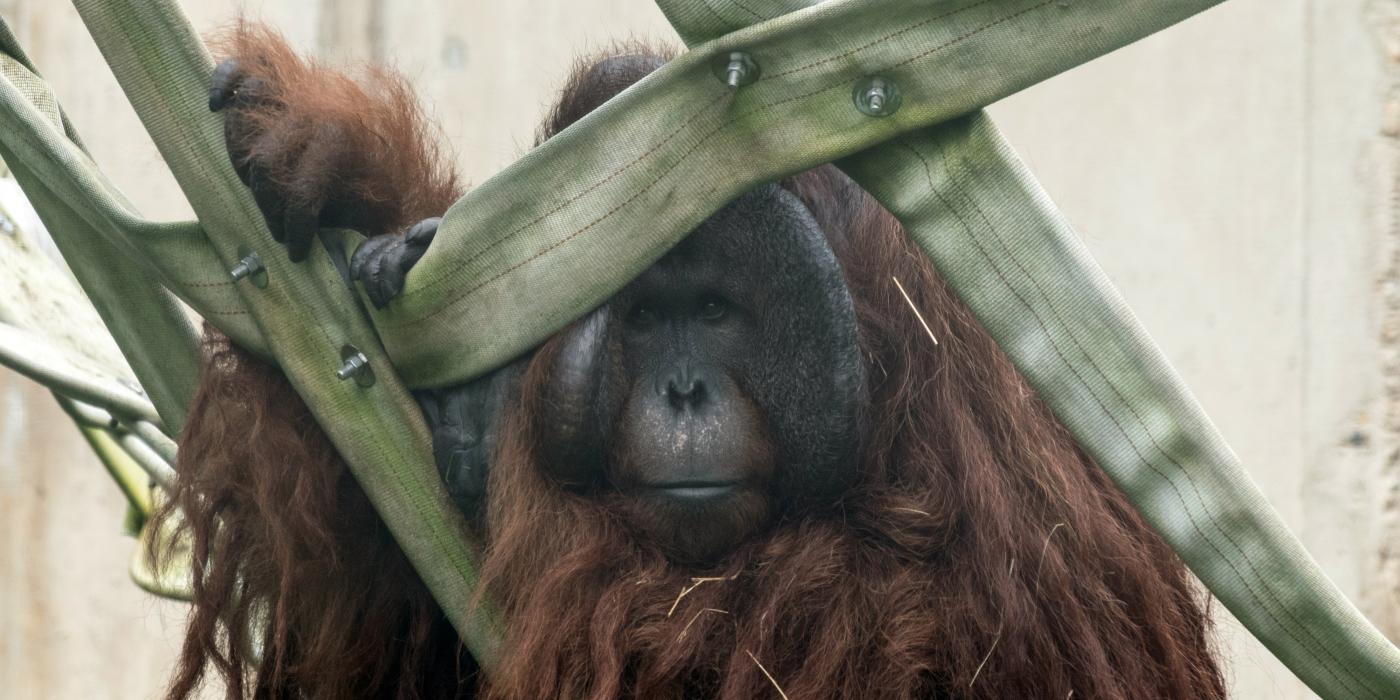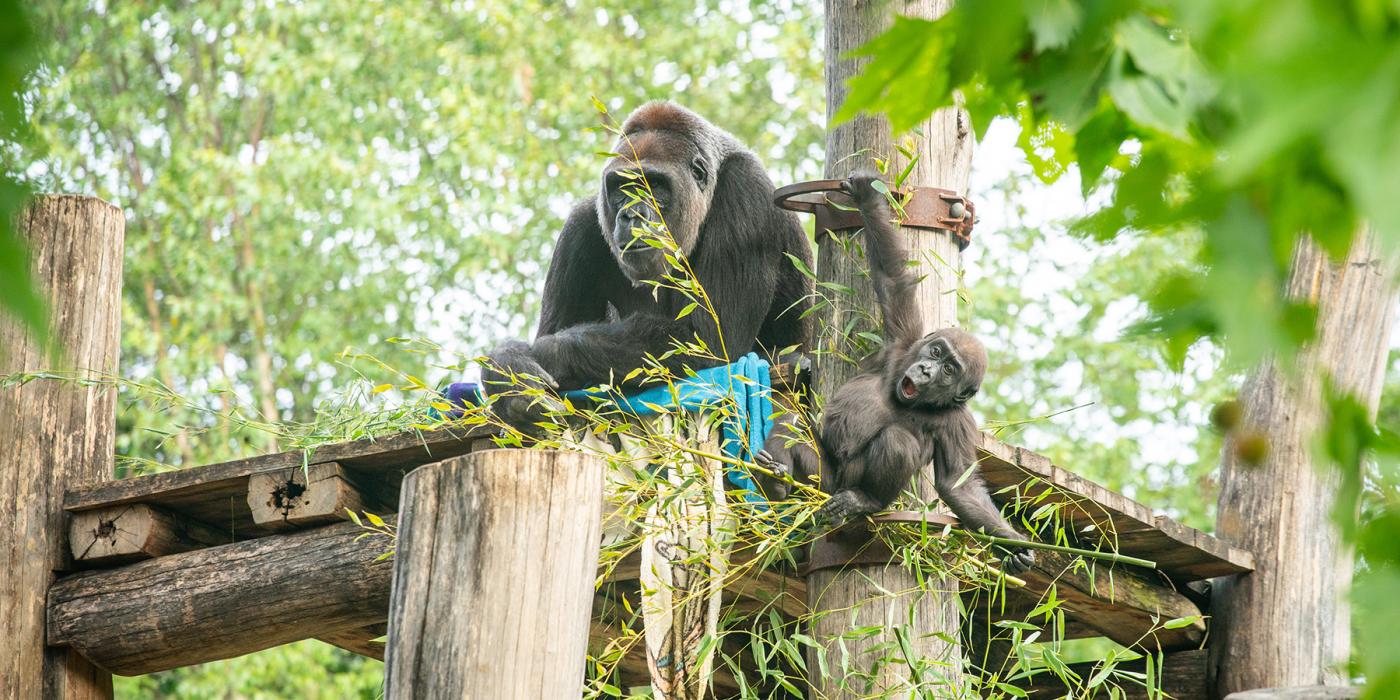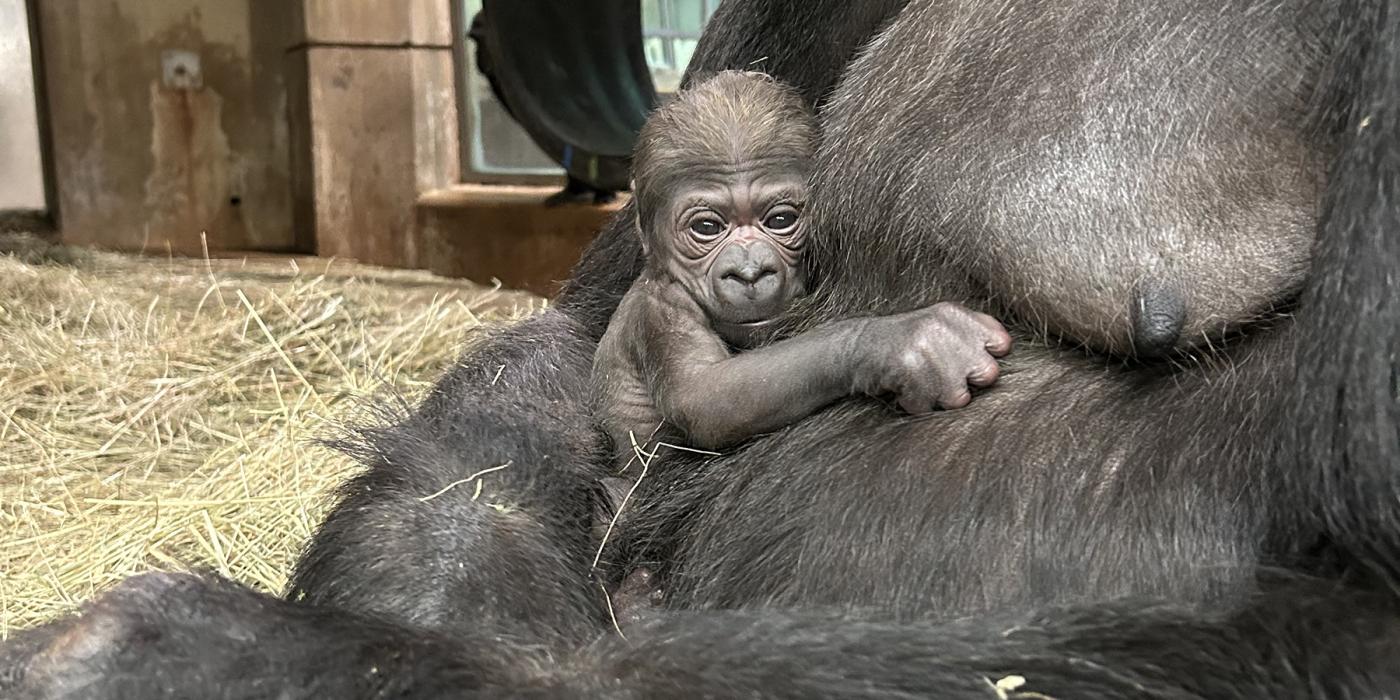Featured Creature: Meet the Gibbons!

Swing into the new year with an animal that knows a thing or two about swinging: gibbons! With hook-like hands for grasping branches, long arms for reaching and specialized shoulder joints for brachiating — there’s no doubt these apes have some amazing adaptations! Get to know Sydney, Ronnie and Bradley from primate keeper Carly Hornberger.
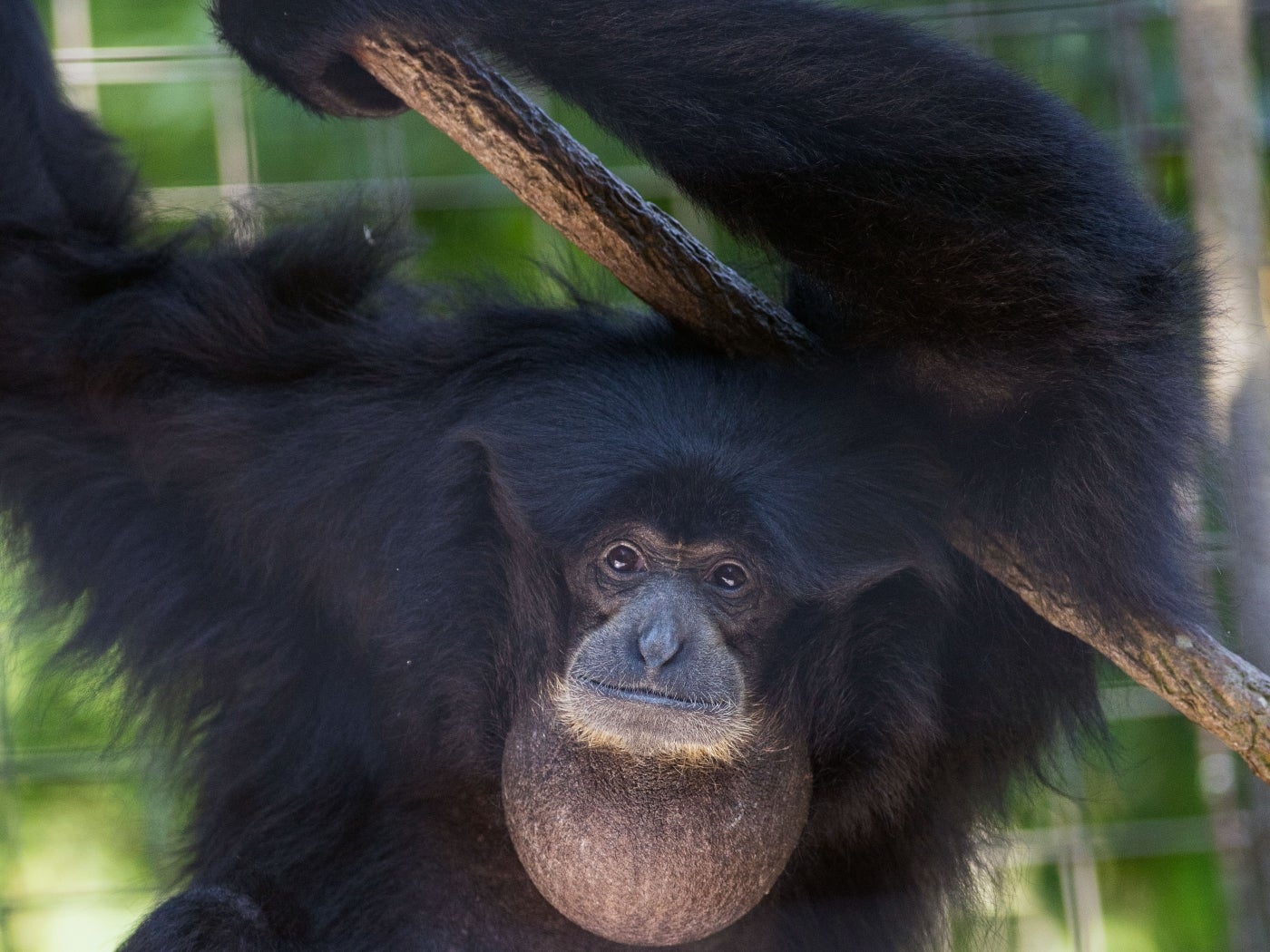
First Things First: What is a gibbon?
Although gibbons are much smaller than our western lowland gorillas or orangutans (i.e. great apes), they, too, are apes! Due to their petite size and stature, people sometimes mistake these small apes for monkeys. There is one telltale way to distinguish the two: monkeys have tails, and gibbons do not!
There are more than a dozen recognized species of gibbons, and we exhibit two of them at our Gibbon Ridge habitat: white-cheeked and siamang. Before you see our gibbons, though, you might hear them. Gibbons defend their territories with loud calls — deep “booms,” loud “wows” and barks — that can echo for miles. These complex songs start slowly and increase in speed. Swinging, brachiating and other impressive acrobatic displays often accompany these vocalizations.
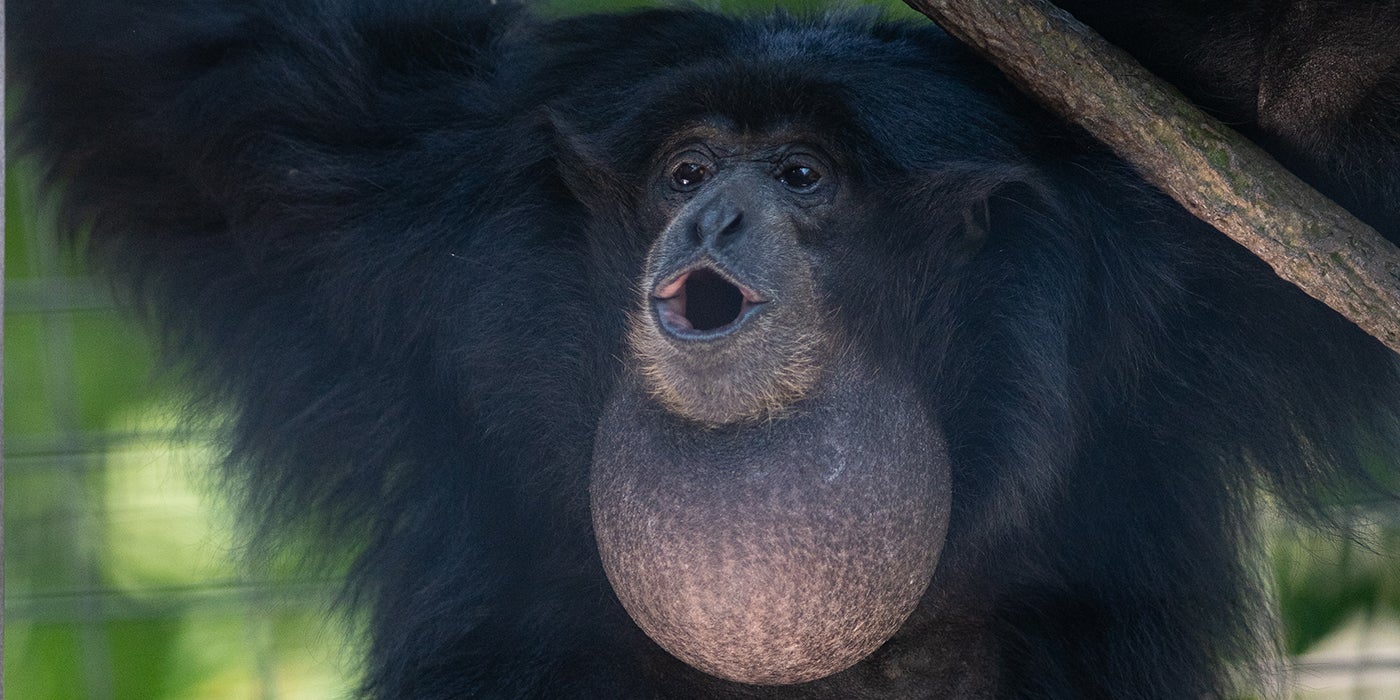
What’s the difference between a white-cheeked gibbon and a siamang?
White-cheeked gibbons like our male, Sydney, are all born with beige hair. As they age, their hair becomes black, save for the distinct white patches on their cheeks for which they are named. Males always remain this color, but females turn beige again once they reach sexual maturity! Adults typically weigh up to 20 pounds.
Siamangs, like Bradley and Ronnie, are the largest gibbon species, weighing in up to 29 pounds. Their black coats are much longer and shaggier than those of white-cheeked gibbons, and they only sport a few pale-colored hairs on their chin. Both species have opposable thumbs and toes, which enables them to grasp and carry things with both their hands and feet! Unique to siamangs are special throat sacs that enlarge to the size of grapefruits and enhance their calls — making them one of the loudest gibbon species.
Now that we’ve brushed up on gibbon biology, let’s meet them!
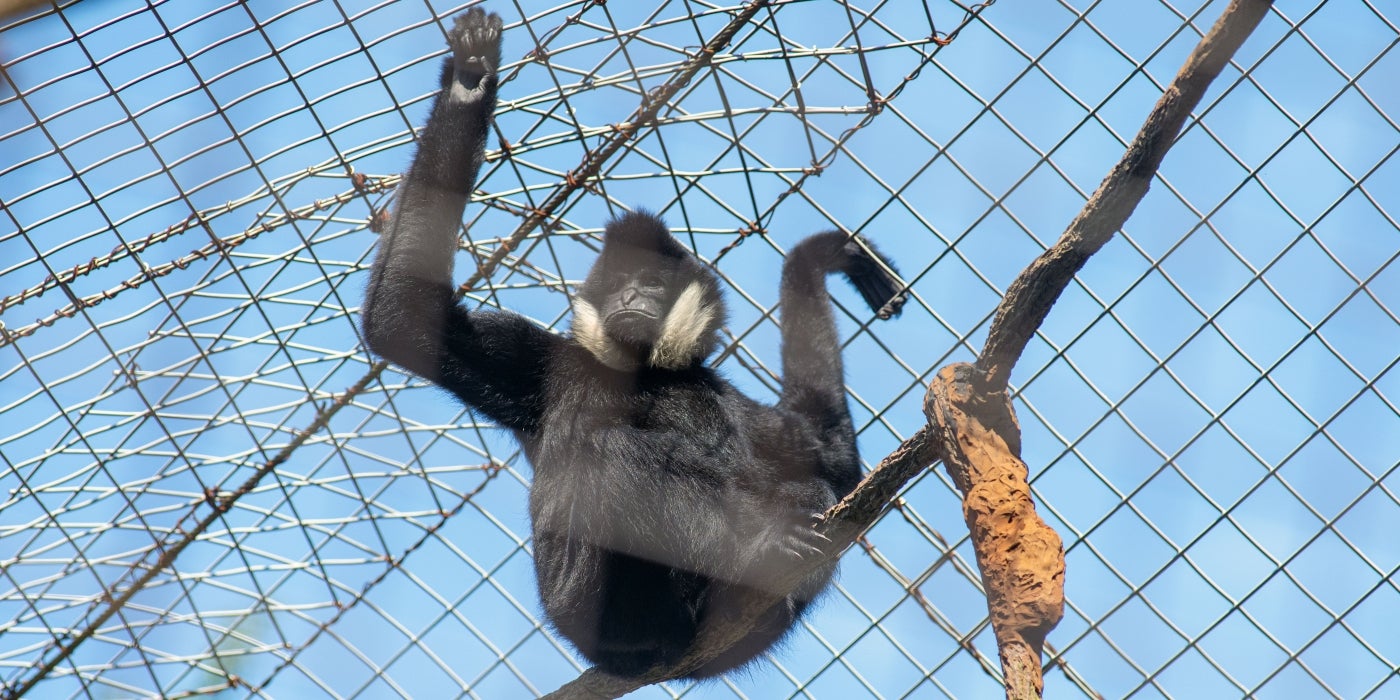
Meet our 20-year-old male white-cheeked gibbon, Sydney! He was born at the Zoo Oct. 13, 1999, to his mother, Siam, and father, Ralph. Sydney enjoys sunbathing in the early morning — it’s not unusual to see him hanging out and catching rays near the top of his enclosure. White-cheeked gibbons are frugivorous, but they are also known to eat leaves, flowers, shoots and insects on occasion. Whenever keepers present Sydney with papaya, banana or other favorite fruits, he makes an excited “ooo-ooo” vocalization that is very endearing!
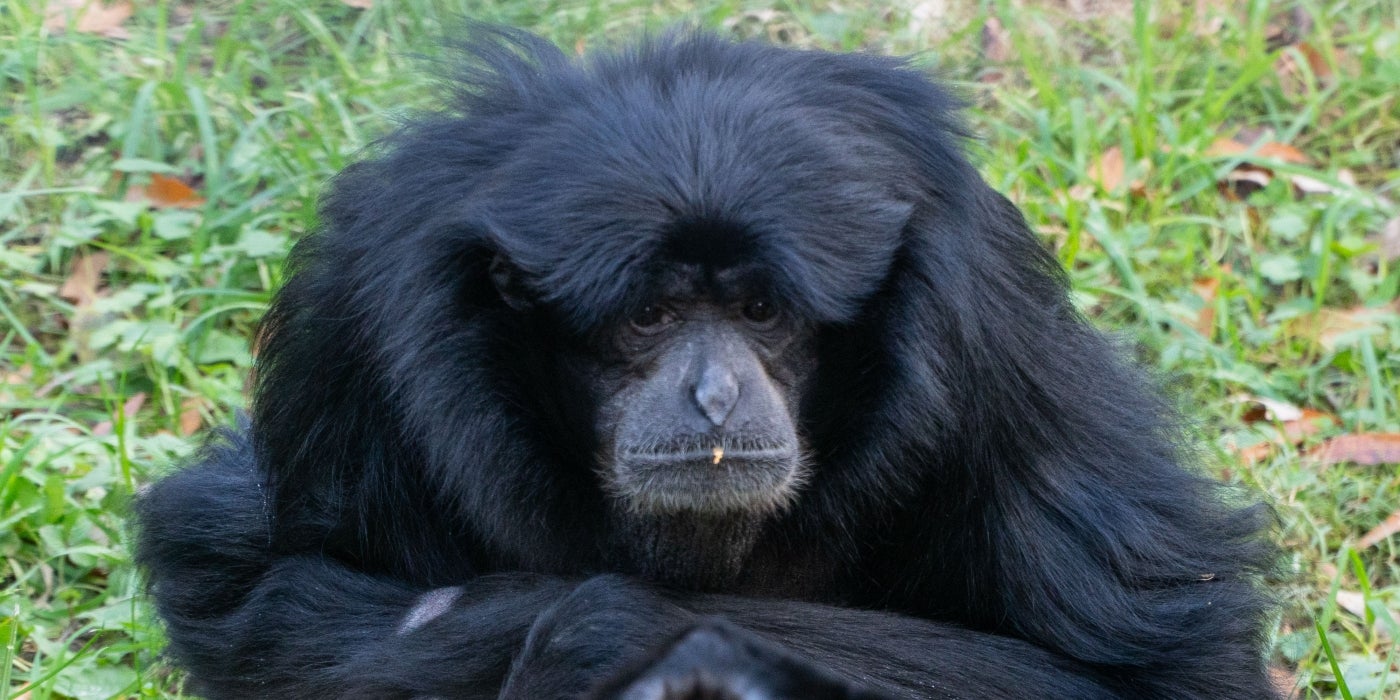
Although Ronnie’s brow covers the tops of her eyes and gives her a “grumpy” look, the Zoo’s 31-year-old female siamang is quite sweet-tempered. When she wants something, she will make it known with a soft squeaking vocalization. The oldest of the three gibbons, she moves at her own pace, yet can be quite acrobatic when she wants to be!
In the wild, a siamang’s diet mainly consists of fruit and vegetation. They will also occasionally eat eggs and insects. Here at the Zoo, they enjoy leafy greens, broccoli, green peppers, papaya, banana and primate chow. Both Ronnie and her male companion, Bradley, have a taste for pasta — their favorite special treat. They only receive this high-value reward after successfully completing a medical behavior, such as injection training. Ronnie's birthday is Oct. 14, 1988.
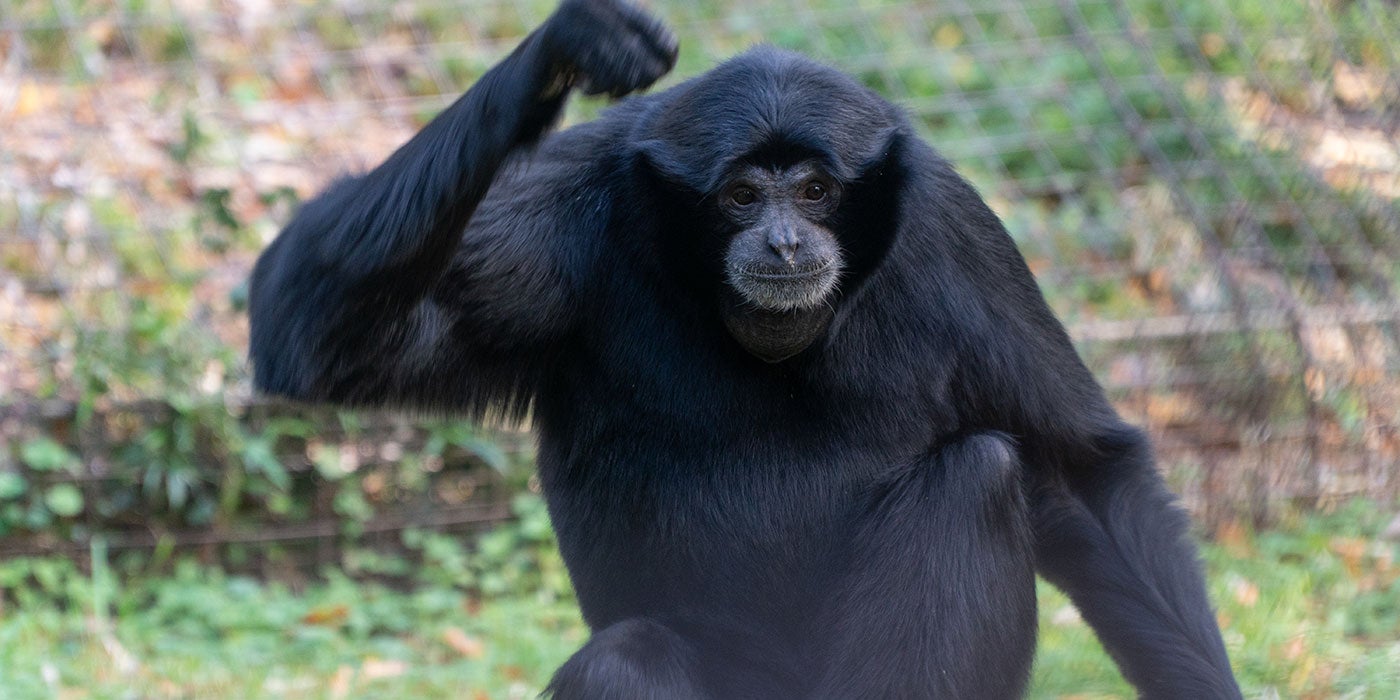
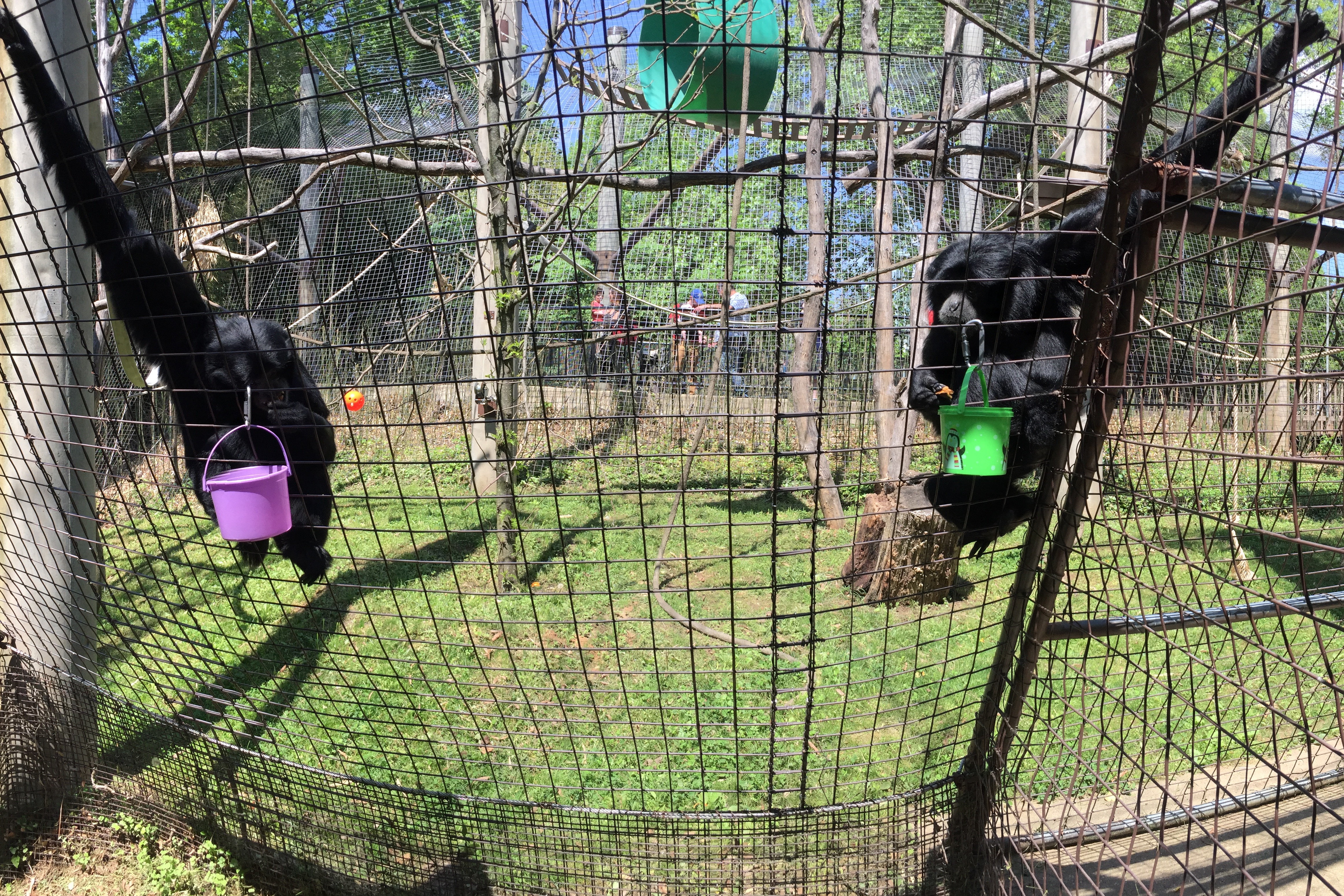
Foraging Fun
The gibbons receive many varieties of enrichment, their favorite items being those that encourage them to use their natural foraging skills. Every morning and afternoon, keepers put a part of the gibbons’ diet into enrichment and spread the rest throughout their enclosure.
Since Sydney’s favorite food is fruit, keepers will take pieces of brown butcher paper, place dollops of applesauce, pumpkin or honey on top, then fold the treats inside, creating tidy packages for Sydney to find scattered about the habitat.
Enrichment can also mimic natural grooming behaviors. Ronnie and Bradley’s favorite enrichment item is a mop head that keepers repurposed into a puzzle feeder. Keepers will hide meal worms in the brush fibers, then place the shaggy item in the habitat for the siamangs to find. The pair will meticulously comb through the strands, picking out and promptly eating each scrumptious insect.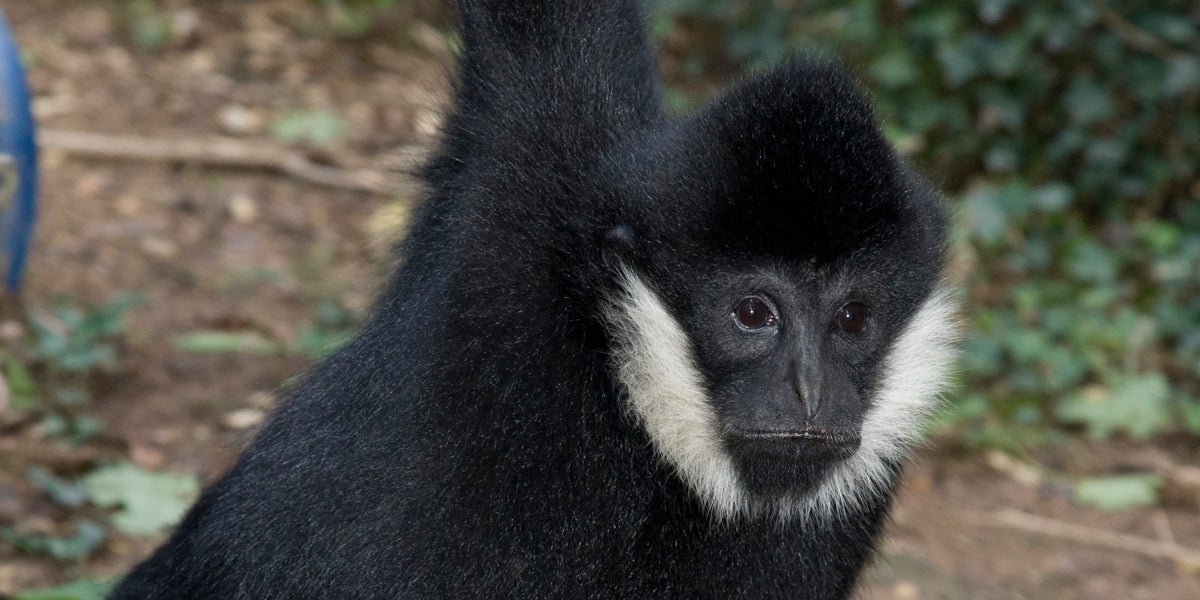
Spread the Word and Save Gibbons
The bad news: Globally, gibbons are one of the most threatened families of primates. Many are considered endangered or critically endangered. In their native habitats, deforestation, poaching and the illegal pet trade remain the largest threats. Unsustainable timber harvesting and agricultural development — particularly palm oil plantations — pose a serious threat to these arboreal apes.
The good news: there are three simple steps you can take at home to help gibbons!
The first — reduce, reuse and recycle — is a great way to help many endangered species. Cut back on single-use goods, find creative ways to use products at the end of their life cycle, and recycle paper, glass, plastic and electronics whenever possible.
Planning a vacation? Then this second tip is for you! Practice ecotourism and refrain from purchasing products made with or from animal parts.
Last, share some of the fun facts you’ve learned here about gibbons with others. Simply raising awareness about these animals can encourage others to appreciate and want to conserve them, too.
This story appears in the January 2020 issue of National Zoo News. Meet Sydney, Bradley and Ronnie at the Smithsonian’s National Zoo’s Gibbon Ridge habitat. For the best chance to see them, visit on fair-weather days when the temperature is above 40 degrees Fahrenheit. Daily primate keeper talks take place at Think Tank at 11:30 a.m., and at the Great Ape House at 1 p.m. and 2 p.m.
